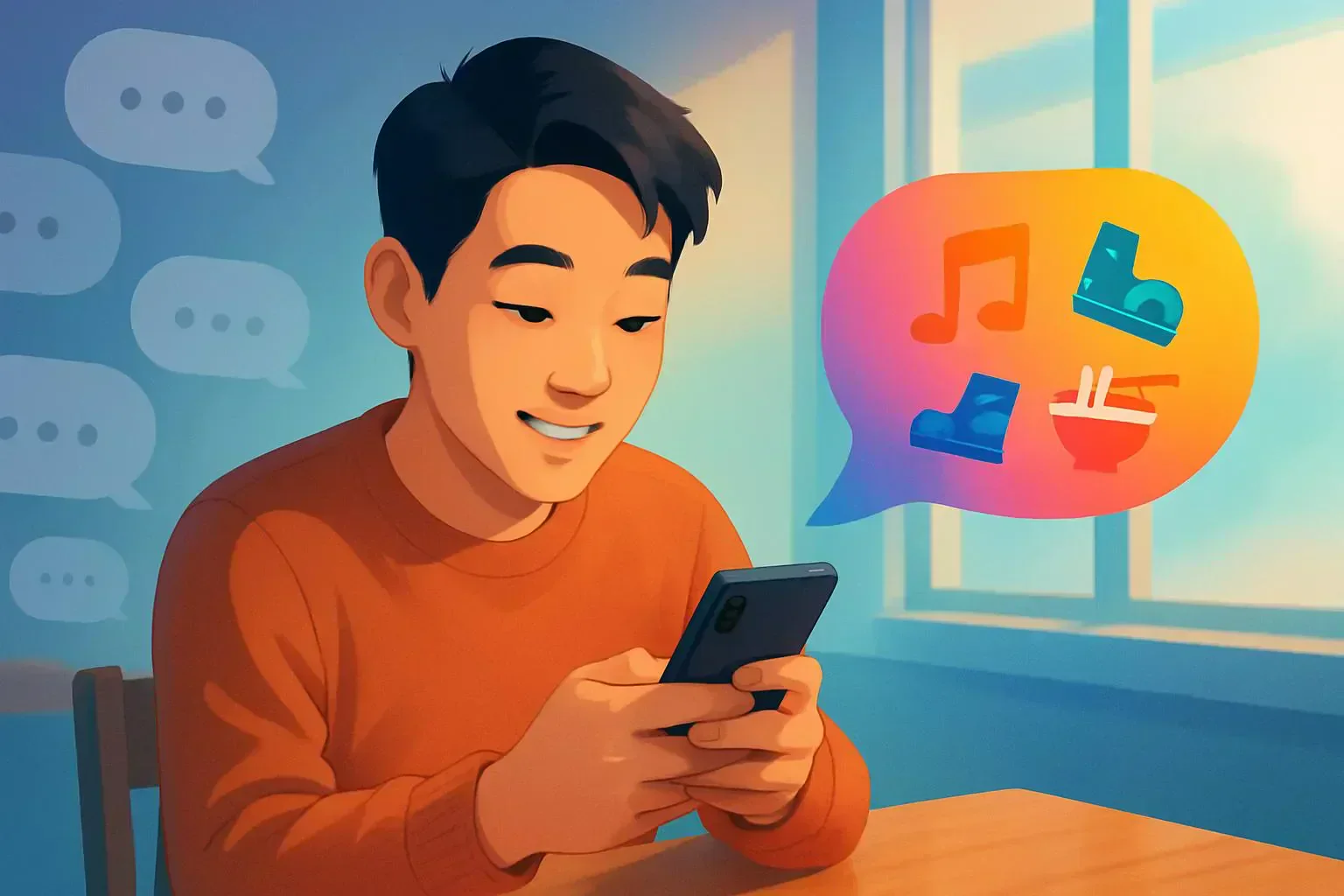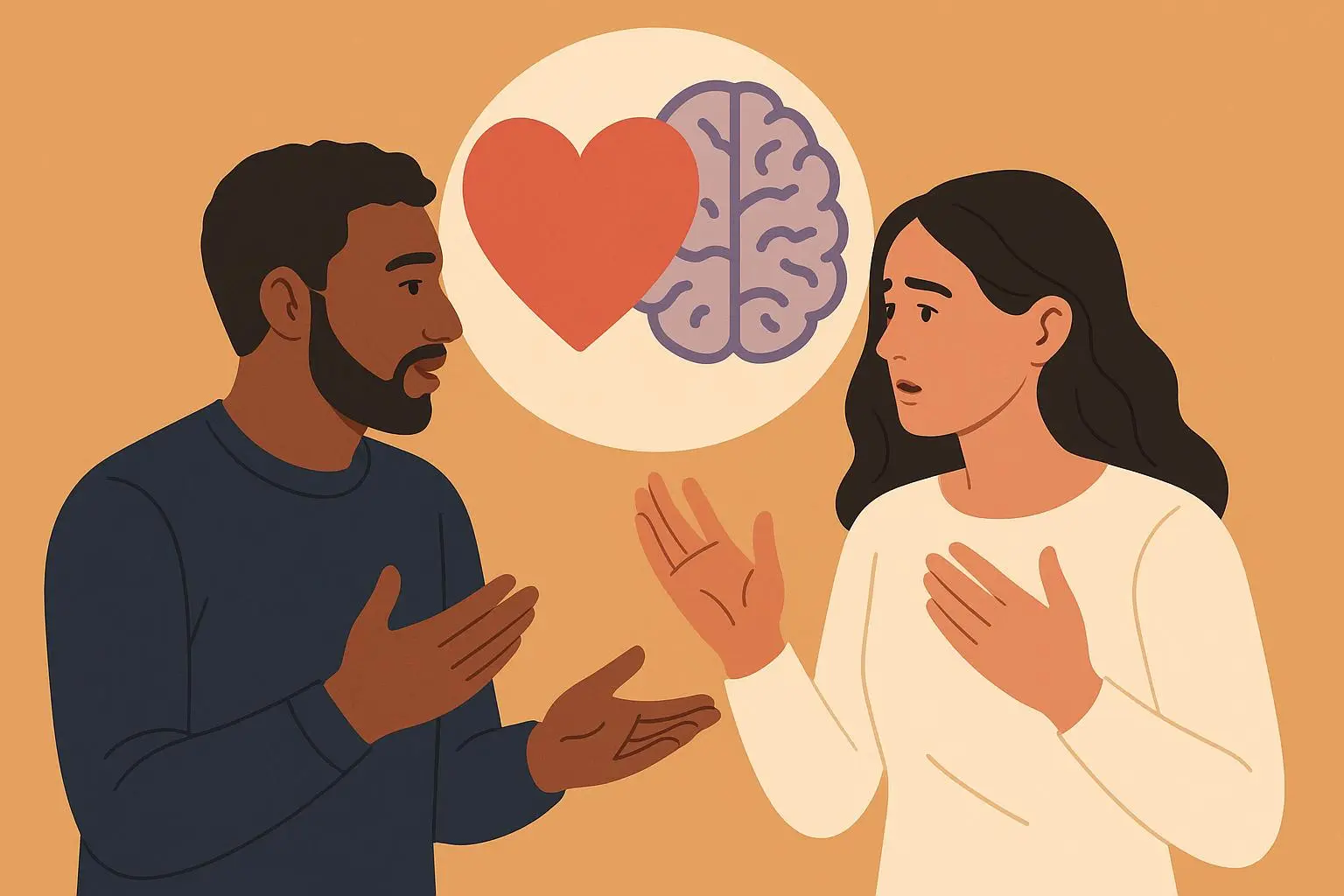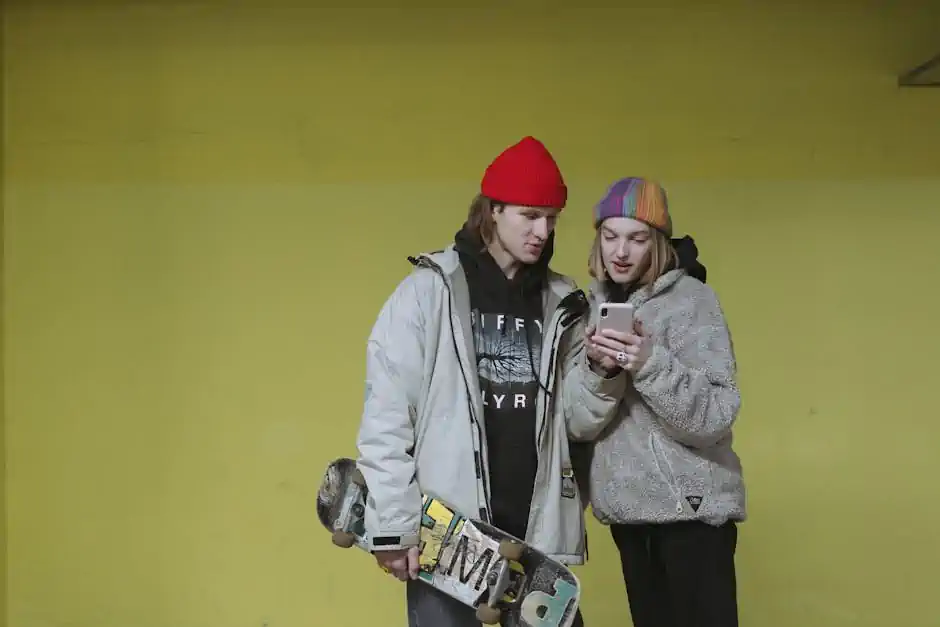
Why Your Dating App Opener Gets Left on Read: The 7 Most Common First Message Mistakes
Published on 10/27/2025 • 10 min read
You matched with someone interesting. Their profile made you laugh. You spent fifteen minutes crafting what you thought was the perfect opener. You hit send feeling pretty good about it.
Then... nothing. Left on read. Again.
Sound familiar? You're not alone, and here's the good news: the problem probably isn't you. It's that you're making one (or several) of the seven most common first message mistakes that psychology and dating app research have identified.
Let's break down exactly what's sabotaging your openers and—more importantly—how to fix it.
Mistake #1: The Generic Greeting of Death
"Hey" "Hi, how are you?" "What's up?"
Congratulations, you just sent the same message as 47 other people in their inbox today. Why would they respond to you specifically?[1]
Why This Fails
Generic openers require the other person to do all the conversational heavy lifting. You've given them nothing to work with. They'd have to pull a topic out of thin air, which feels like work. When everyone's juggling multiple conversations, people respond to messages that make engagement easy.
From a psychological standpoint, generic greetings trigger what researchers call "decision fatigue."[2] Your match has to decide how to respond, what to say, whether you're even worth the effort—all from a message that communicates zero personality or genuine interest.
What to Do Instead
Reference something specific from their profile. Not just "I see you like music" (everyone likes music), but "I noticed you're into that really obscure band—are they actually good or am I missing something?" Specificity signals effort, and effort signals interest.
Mistake #2: The Job Interview Opening
"What do you do for work?" "Where are you from?" "Do you have any siblings?"
You just turned a potential romantic connection into a LinkedIn networking event. Nobody swipes on dating apps hoping to fill out a biographical questionnaire.
Why This Fails
Psychology insight: Research on successful dating conversations shows that connections leading to real dates involve discussions about feelings, experiences, and passions—not biographical data exchanges. People remember how you made them feel, not what questions you asked about their job.
When you lead with factual questions, you're gathering information but creating zero emotional connection. The conversation feels transactional rather than organic. Even if they answer, you're stuck in interview mode with nowhere interesting to go.
What to Do Instead
Ask questions that invite storytelling rather than facts. Instead of "What do you do?" try "What's the most unexpected thing about your job?" Instead of "Where are you from?" ask "What's something people always get wrong about where you grew up?"
Better yet, lead with an observation or opinion that invites their take: "Your travel photo from Iceland looks incredible—I'm convinced the Northern Lights are either insanely overrated or life-changing, no middle ground. Which was it?"
Mistake #3: The Compliment Catastrophe
"You're gorgeous" "Beautiful eyes" "Hot pics"
Surface-level appearance compliments might seem flattering, but they're actually the fastest way to get lumped in with every other person who's hitting on them.
Why This Fails
Here's what your match hears when you lead with appearance compliments: "I looked at your photos and thought you were attractive enough to message, but I haven't engaged with anything else about you as a person."
Physical compliments are low-effort. They don't demonstrate that you actually read their profile or found something interesting about who they are. In fact, studies show that people value compliments about choices they made (their style, their photography, their taste in books) far more than compliments about things they simply are.[3]
Plus, attractive people get appearance compliments constantly. If that's your opener, you're just background noise.[4]
What to Do Instead
Compliment something they chose or did rather than something they simply are: "That outfit in your fourth photo is incredible" is marginally better than "you're pretty." But even better? Skip physical compliments entirely in your opener and focus on their interests, humor, or personality: "Your taste in music is spot-on" or "That hiking photo from your trip looks like you picked the perfect spot."
Mistake #4: The Comedy Audition
You spent twenty minutes crafting an elaborate joke or pun based on their name, their profile, or a shared interest. It's clever. It's original. You're pretty proud of it.
And it completely bombs.
Why This Fails
Humor is subjective and risky in text form. What seems hilarious to you might land as confusing, try-hard, or even offensive to them. Worse, when you lead with a comedy bit, you set an impossible bar for the rest of the conversation. If they laugh, great—but then what? Do you need to be equally witty in message two? Five? Twenty?
The pressure to maintain that level of cleverness exhausts everyone involved. Plus, if your joke doesn't land, the conversation is dead on arrival with no easy recovery.
What to Do Instead
Use light humor, not elaborate comedy. A playful observation works better than a crafted joke: "I see you're into rock climbing—I tried that once and lasted approximately twelve minutes before my arms gave out. Is there a less embarrassing way to get started?"
This shows personality and humor while also inviting them to share advice or experiences. It's conversational rather than performative.
Mistake #5: The Novel Nobody Asked For
You send three paragraphs about yourself, your interests, your weekend plans, your thoughts on their profile, and a detailed question at the end.
They feel exhausted just looking at it and decide to respond "later" (which becomes never).
Why This Fails
Decision fatigue strikes again. When your first message requires significant mental energy to read and respond to, you're asking for too much too soon. Even if they're interested, crafting a response to a novel-length opener feels like homework.
Your match doesn't know you yet. They haven't decided if they want to invest conversation energy. A massive first message demands investment before you've earned it.
What to Do Instead
Keep first messages short and punchy—2-3 sentences max. You want just enough to spark interest and make responding easy. "I noticed you're into true crime podcasts—any recommendations? I binged the entire Zodiac series last week and need something new."
Short, specific, easy to respond to. If they're interested, the conversation will naturally expand.
Mistake #6: The Copy-Paste Obvious
"Hey [NAME], I noticed you like [INTEREST FROM PROFILE]. I also really enjoy [SAME INTEREST]. Would love to chat more about it!"
This might seem personalized, but experienced dating app users can spot a template from a mile away. When your message could apply to literally anyone, it signals you're mass-messaging people rather than genuinely connecting.
Why This Fails
Templates feel impersonal even when you fill in the specific details. They communicate efficiency over interest, which isn't exactly romantic. Plus, if you're using the same basic formula for everyone, your matches are probably receiving similar templates from other people—yours blends into the background.
People want to feel specifically chosen, not like one option among many you're systematically contacting.
What to Do Instead
Find one genuinely specific detail that caught your attention and mention it in a way that couldn't work for anyone else: "I see you have strong opinions about breakfast foods based on that caption—I need to know: where does French toast rank?"
The specificity proves you actually engaged with their unique profile rather than plugging their details into a formula.
Mistake #7: The Conversation Cliff
You open with something decent. They respond. Great! But then your follow-up ends with a statement instead of anything that invites response. The conversation just... stops.
Not because either person lost interest, but because you forgot to leave a door open.
Why This Fails
Think of conversation like a tennis match—you have to hit the ball back to the other person. Every message should include either a question, an invitation to share, or an open-ended observation that naturally prompts a response.
When you end with a statement, you've caught the ball and walked off the court. They have to work to restart momentum, which many people won't bother doing, especially with multiple other conversations competing for attention.
What to Do Instead
Always include a conversational hook. Instead of: "Yeah, I love Italian food."
Try: "Yeah, I love Italian food—I'm always looking for new places though. Have you found any hidden gems?"
Or: "Italian food is my weakness. What's your go-to order when you're trying to impress someone versus your 'I'm comfortable with you' order?"
See the difference? The first is a dead end. The second and third hand them the conversational ball and make responding natural and easy.
The Psychology Behind Successful Openers
Understanding why these mistakes fail helps you craft better messages. Here's what successful first messages have in common:
They show specific attention. Generic messages get generic responses (or none). Specific messages demonstrate genuine interest and make the other person feel seen.
They make responding easy. The best openers give clear direction for where the conversation can go next. No decision fatigue, no mental work required.
They balance interest and confidence. You're showing you're interested without being desperate. You're confident enough to be playful without trying too hard to impress.
They create curiosity. Good openers make the other person want to know more about you, either through humor, interesting questions, or unique observations.
They feel conversational, not transactional. You're starting a dialogue, not conducting an interview or delivering a pitch.
How AI Can Actually Help (Without Making You Sound Like a Robot)
Here's where things get interesting. Everything we've talked about—the conversation killers, the generic mistakes, the accidentally off-putting patterns—AI assistance can help you avoid all of it.
But there's a crucial distinction between using AI to enhance your communication versus using it to replace your personality.
AI can help you:
- Identify what's working and what isn't in your messaging patterns
- Suggest conversation angles you might not have considered
- Point out when you're accidentally ending conversations or being too generic
- Give you confidence to send something instead of overthinking for twenty minutes
AI shouldn't:
- Write your entire message for you
- Create a personality that isn't authentically yours
- Prevent you from developing your own communication skills
Think of it like having a really socially savvy friend looking over your shoulder. They might say "Hey, that message is kind of generic—maybe reference that specific thing from their profile instead?" You're still writing the message in your voice; you're just getting strategic guidance.
Tools like Rizzman's Opener Suggestions analyze profiles and suggest conversation starters based on what's actually there, not generic templates. The key is using these suggestions as starting points, then adapting them to your natural communication style.
Practice Scenarios: Good vs. Bad Openers
Let's look at real profile scenarios and contrast effective versus ineffective approaches:
Their profile mentions: "Love hiking, terrible at cooking, obsessed with 90s music"
❌ Bad: "Hey! I like hiking too. What's your favorite trail?"
- Generic, could apply to anyone, low effort
✅ Good: "Okay but I need the full story on the cooking disasters—please tell me there's at least one smoke alarm incident. Also, 90s music... are we talking Britney or more obscure?"
- Specific, playful, multiple conversation hooks, shows you actually read the whole profile
Their profile mentions: Travel photo from Tokyo with caption about the best ramen they ever had
❌ Bad: "Your travel pics are awesome! Where else have you been?"
- Generic compliment, boring question
✅ Good: "That ramen photo is making me irrationally hungry. What's the secret to finding the actually good places versus tourist traps? Because I need this knowledge."
- Specific to their experience, playful tone, invites them to share expertise
Their profile mentions: They're a teacher
❌ Bad: "What grade do you teach?"
- Interview question, low emotional engagement
✅ Good: "Teaching is intense—what's the most unexpectedly funny thing a student has said to you this year?"
- Shows awareness of their profession, invites storytelling, creates connection through humor
The Bottom Line on Opener Success
Your first message isn't about being perfectly witty or impressively smooth. It's about demonstrating three things:
- You actually read their profile (specificity proves this)
- You're interesting to talk to (personality and playfulness show this)
- Engaging with you will be easy and fun (making responses easy demonstrates this)
Avoid generic greetings, biographical interviews, surface compliments, comedy auditions, overwhelming novels, obvious templates, and conversation cliffs. Instead, be specific, make responding easy, show personality, and always keep the conversational ball in play.
The openers that work aren't necessarily the most clever or elaborate. They're the ones that make the other person think "Oh, this person actually seems interesting, and responding to them would be fun rather than exhausting."
That's your goal. Not perfection—engagement.
FAQ: Dating App Openers
How long should my first message be?
2-3 sentences is the sweet spot. Long enough to show personality and reference something specific, short enough that responding doesn't feel like work. You can always expand later once conversation is flowing.
Should I use emojis in my opener?
One or two can add personality and convey tone, but don't overdo it. "Your travel photos are incredible! 🌍 Where's next on your list?" is fine. Five emoji per sentence makes you look like you communicate exclusively in picture language.
What if their profile is really generic and gives me nothing to work with?
That might be a sign they're not serious about the app or not someone you'd click with anyway. But if you want to try: comment on their photos ("That coffee shop in your second photo looks amazing—where is that?") or ask a playful either/or question ("Quick poll: morning person or night owl?").
How long should I wait for a response before following up?
Don't follow up on an opener that got ignored. If they were interested, they'd have responded. Multiple messages without a response looks desperate. Move on to matches who actually engage.
Ready to Stop Getting Left on Read?
Try Rizzman's Opener Suggestions to get personalized conversation starters based on actual profile content. No generic templates—just smart strategies for creating messages that get responses.
Because you deserve matches who are excited to hear from you, not people who leave you on read.
References
Footnotes
-
DatingNews.com. (2024). Online Messaging Statistics: How to Make the First Move. Dating News Industry Trends. ↩
-
Iyengar, S., & Lepper, M. (2000). When choice is demotivating: Can one desire too much of a good thing?. Journal of Personality and Social Psychology, 79(6), 995-1006. ↩
-
Boothby, E. J., Cooney, G., Sandstrom, G. M., & Clark, M. S. (2018). The liking gap in conversations: Do people like us more than we think?. Psychological Science, 29(11), 1742-1756. ↩
-
JPLoft Technologies. (2024). Dating App Statistics 2024: User Behavior and Engagement Insights. JPLoft Blog. ↩
Ready to Optimize Your Dating Profile?
Get the complete step-by-step guide with proven strategies, photo selection tips, and real examples that work.


